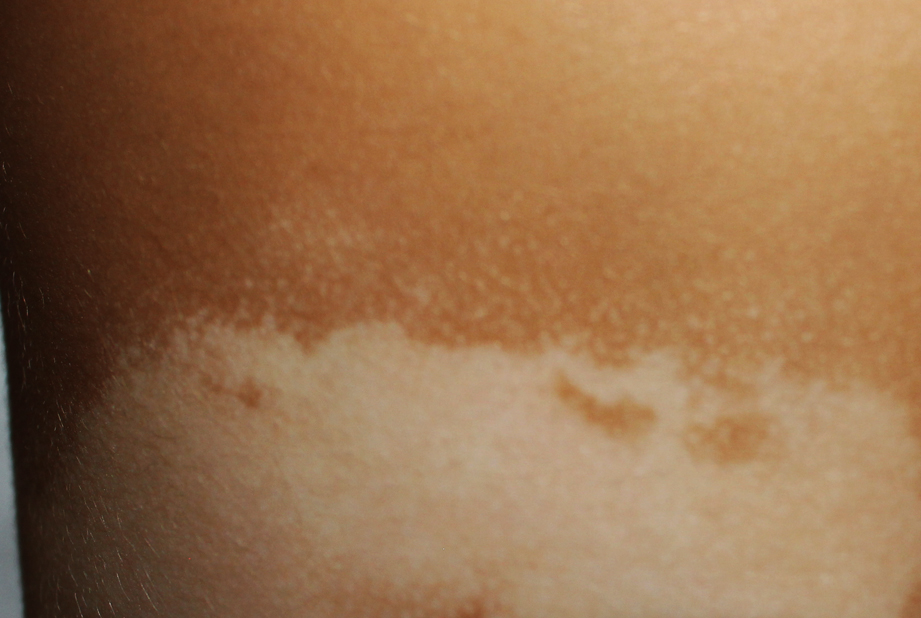Segmental vitiligo with confetti-like peripheral depigmentation.

Downloads
DOI:
https://doi.org/10.26326/2281-9649.28.4.1931How to Cite
Abstract
A confetti-like depigmentation has been described following contact with oxidizing chemicals, for example hydroquinone (4), after laser therapy (3) but also in non segmental vitiligo (6): in the latter case the confetti-like depigmentation could have a negative prognostic meaning (6). Some Authors (5) claimed that the vitiligo skin can be depigmented in two ways, clearly visible on the outskirts of the patches: an intermediate color band between healthy skin and vitiligo skin and hypopigmented or completely depigmented spot macules centered by a follicle; for this reason they called the latter modality perifollicular depigmentation. In our case the diameter of the multiple depigmented spots was uniform (1-2 mm) and simulated a follicular pattern; moreover, the presence of inflammatory infiltrate prevalent in the follicular site, as already reported in the relevant literature (7), supported the hypothesis that the depigmentation interested the hair follicle melanocytes primitively. The primary and prevalent involvement of the hair follicle melanocytes has been shown in follicular vitiligo (1, 2), a new form of non-segmental vitiligo in which the involvement of terminal hairs (hair, eyelashes, etc.) is more precocious and prevails over the modest involvement of the epidermal melanocytes, as opposed to what occurs in the forms of classical non-segmental vitiligo, in which only the epidermal melanocytes are affected, while those of the hair follicles are only involved in some severe forms later associated with leucotrichia. (...).
